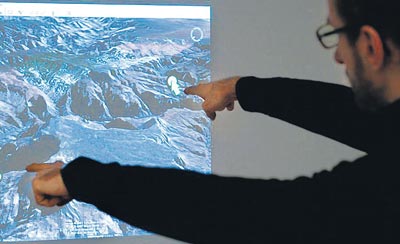New ways to interact with computers.....
@vishnu_badlapur (560)
India
March 4, 2008 7:52am CST
All these days I have come across so many new research in the interactivity of humans and computers. First it was Microsoft Surface that took so many of us to wonder. Look into this website http://www.microsoft.com/surface. One could interact with this computer merely with the touch of your fingers. One more such research team has come up with similar idea.
I have attached an image in which a man stands in front of a large screen, gesticulating in a hectic manner. As if by magic, images suddenly appear on the display. Their movements follow the actor’s gestures, rotate at the slightest turn of a finger, and become larger or smaller as desired. This scene will look familiar to anyone who has watched the sci-fi film Minority Report. Now, a new system promises to turn it into reality.
Called the iPoint Presenter, the system will be demonstrated at CeBIT 2008, the world’s largest IT fair which begins Tuesday in Hanover.
At the heart of the system - developed by Paul Chojecki, project manager at Fraunhofer Institute for Telecommunications in Germany - is a set of cameras that enable the computer to observe the person standing in front of the projection screen. The moment this person moves his hands, the computer reacts – without being touched at all.
“It begins by determining the position of the user’s index finger, then follows its movements,” Chojecki explains. The user can point to buttons or use gestures to move virtual objects.
Through “multi-pointing interaction” - or commands using multiple fingers - he can rotate, enlarge or minimise objects. This requires neither special gloves nor any particular markings. Anyone can intuitively operate the device with their bare hands without any preparation whatsoever.
The iPoint has many possible applications, Chojecko says. Apart from video games, it could potentially replace touchscreens at info terminals, or help to edit and organise photos.
“What is special about it is that the human-computer communication is entirely contact-free. The system is therefore ideal for scenarios in which contact between the user and the computer is not allowed or not possible, such as in an operating theatre,” says Chojecki.
A particularly useful feature is that the system can be extended to as many as nine cameras. This immensely increases the user’s operating range and enables them to interact with very large screens, such as those at trade fairs or advertising events.
No responses





